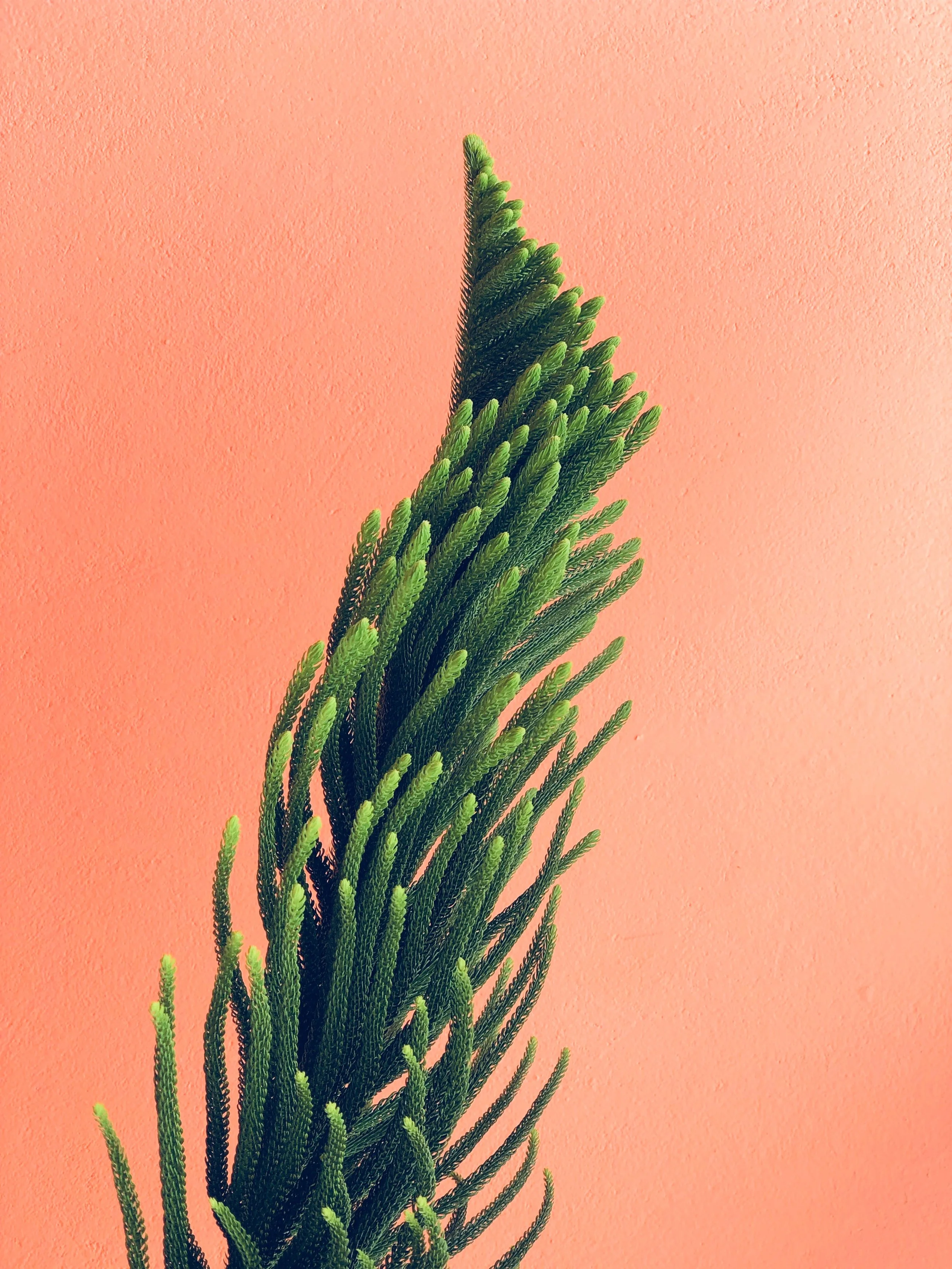Id been feeling tired and drained for a while especially around the time of the month. I got my bloods checked and records showed I was low in iron so I started taking high quality supplements and eating more iron rich foods. After a while with a combination of yoga, meditation, supplements and diet I suddenly had less fatigue. So now I make sure I carve out the time for these things because the benefits are worth it for me.
Check out this article if you think you may be low in iron…
By Sue Van Raes
Iron, or (Fe), is known as one of the most common elements on earth, making up five percent of the earth’s crust. Iron is an essential trace mineral imperative for a healthy body—from energy production, to transporting oxygen in the blood and cognitive function, to a more balanced mood. Iron is a nutrient you surely want to include in your daily diet.
While there are many foods high in iron, according to the CDC (Centers for Disease Control and Prevention), iron deficiency is the most common nutritional deficiency in the U.S. Iron deficiency is usually linked with a condition called anemia, a deficiency defined by the National Heart, Lung, and Blood Institute as “a condition in which your blood has a lower-than-normal amount of red blood cells or hemoglobin.”
There are many iron-rich foods, but many of them are from animal sources. Consequently, when eating a vegetarian, vegan, or plant-based diet, it is imperative to consciously include specific plant foods with iron.
Types of Iron
When it comes to food sources for iron intake, there are a couple of things you should know. There are two primary types of iron: heme and nonheme iron. Heme iron is the type of iron found mainly in animal sources, whereas nonheme iron is the type that is predominantly found in plants. Nonheme iron is not as readily absorbed as heme iron.
Why Iron Is Important
Notably, for healthy iron levels, it is not just how many foods high in iron you eat, or how strong your iron supplements are, but also how well your body absorbs the iron. There can be other causes for anemia other than not getting enough iron, such as digestive issues (malabsorption) and toxicity—such as lead toxicity. If you are a vegetarian or vegan, research shows you can get the best iron absorption by consuming plant-based foods high in iron along with foods high in vitamin C, such as citrus, broccoli, and tomato. Vitamin C is most effective in increasing iron absorption when consumed alongside of plant-based iron sources meal-by-meal.
There are many symptoms of low iron (anemia) but the most common are:
• Exhaustion
• Pale skin
• Shortness of breath
• Rapid heartbeat
• Hormone imbalance
• Mood irregularities
• Coldness in hands & feet
• Chest pain
With a recommended daily allowance of 18 mg per day for adults and children over four years old, and 27 mg per day for pregnant and lactating women, try these plant-based foods that are rich in iron to ensure you reach your optimal iron levels and avoid the many health issues associated with iron-deficiency anemia.
1. Lentils
Lentils, one of the oldest pulse crops, have been providing nutrition and sustenance for an estimated 8,000 years. The many variations of lentils (red, yellow, green, and black) are known as high-protein plant-based foods that are also high in iron content and easy to digest. Earthy and nutty in flavor, lentils are a versatile food to explore and include as reliable sources of iron (as well as reliable sources for protein and fiber) in any plant-based meal or diet.
How to enjoy: Try using lentils in a variety of soups or as the protein base for a veggie burger. Lentils also go well with traditional curries or atop of your favorite salad for a protein, fiber, and iron boost. Having a party or gathering? Try using lentils in a dip or spread (with tahini, chopped garlic cloves, lemon juice, and olive oil and puree until smooth) as an appetizer.
2. Cashews
You have likely grabbed a handful of cashews for a quick snack or maybe spread some cashew butter on your favorite cracker. Native to Brazil, these tasty and creamy nuts are popular ones that you will find in many grocery stores and restaurants. Known for their high mineral content, including iron, and a super-creamy texture when blended, cashews and cashew butter are often used to make vegan milks, soups, and sauces. Cashews are a wonderful ingredient to snack on and to include in many vegetarian and vegan dishes for a healthy supply of plant-based iron.
How to enjoy: Cashews are delicious (and more easily digested) when soaked in sea salt water overnight and roasted on low in the oven for 10to 12 hours for a crispy and salty snack. Try making a pad Thai sauce with cashew butter (instead of peanut butter), or use cashews as a thickener in a vegan curry or blended vegetarian soup. Try blending cashews with nutritional yeast, lemon, garlic, salt, and water for a delicious vegan cheese sauce.
3. Quinoa
Quinoa, the ancient grain that is native to the Andean mountains of Peru, was known as the queen of all grains to the Inca people and was considered a superfood. Making its mark in the health food industry today, quinoa is a wonderful source for plant-based protein, and is chock full of plant-based iron. One cup of cooked quinoa provides 2.8 mg of iron.
How to enjoy: Quinoa can be substituted for rice or couscous in just about any dish. Try creating a delicious mixed vegetable stir fry served over quinoa for a balanced and satiating meal. Make into a version of tabbouleh, substituting nutrient-dense and iron-rich quinoa for the more traditional couscous. Grind quinoa in a coffee grinder and mix with hot water to make an instant warm breakfast cereal that you can top how you would your favorite oatmeal. Want a little boost to your salad? Add cooked quinoa to your mixed green salad for a little extra plant-based iron and protein.
4. Swiss Chard
Similar to many dark leafy greens, Swiss chard has an impressive profile when it comes to nutrient density. With nearly 4 mg of iron per one cup of cooked Swiss chard, this particular green packs a serious punch. Swiss chard is easy to grow and such a great source of vitamins, minerals, antioxidants, and other nutrients that it will be among the first crops grown on planetary or lunar space stations.
How to enjoy: Swiss chard is tasty and simple to prepare. Try sautéing or steaming with just a squeeze of lemon, a couple of cloves of garlic, and a sprinkle of salt. Add the leafy greens to any soup or stew right before serving, with just enough time for it to wilt. For a nutrient-rich breakfast vegetable, serve gently cooked as a bed for your poached eggs.
5. Sunflower Seeds
Known as the fruit of the stunning late summer sunflower, sunflower seeds are a rich source of minerals, including plant-based iron. Sunflower seeds are also known for their hypoallergenic quality—a nice nut-free option—making sunflower butter a great replacement in dishes for those with nut allergies.
You can find these highly nutritious seeds growing in a wide array of locations around the globe.
How to enjoy: Roast the seeds for just a minute on your stove top in a cast iron skillet with your favorite spice blend and sprinkle on top of your favorite salad. Mix raw or roasted into any trail mix or try sunflower nut butter as a replacement in a classic PB&J for those with peanut allergies.
6. Molasses
Molasses are the viscous liquid that comes from processing sugar beets or sugarcane into sugar. Considered a high potency plant-based iron source that can work to raise bodily iron levels and treat anemia, molasses are an easy ingredient to include in your diet.
How to enjoy: It is easy to find a bottle of blackstrap molasses at your local health food store; for the best quality, shoot for organic and unsulfured (made from mature sugarcane plants that have been allowed to ripen naturally before processing, keeping the nutrients intact). Try using molasses as a sweetener in dessert recipes, especially those that call for maple syrup or brown sugar, for a richer flavor. Use a dollop with olive oil or butter to coat your favorite roasted vegetables, such as carrots, sweet potatoes, or pumpkin. Try a teaspoon in your morning oatmeal or yogurt for some subtle but tasty sweetness. Lastly, feel free to eat molasses right off the spoon for a daily dose of plant-based iron.
7. Tahini
Best known in Mediterranean-type dips such as hummus and baba ghanoush, tahini (ground sesame seed butter) is rich in the essential trace mineral iron. A variation of tahini is black tahini, which comes from black sesame seeds and has a more intense sesame flavor. Tahini was used ancient North African, Turkish, Greek, and Israeli cuisine. Tahini has made its mark in the food world in well-known salad dressings, sauces, and even swirled into desserts.
How to enjoy: While hummus is a popular tahini-based dip that you may already include in your diet, there are also many tahini options you might enjoy. Try it as a base for a creamier salad dressing. Blend into a soup for a creamier texture. For a nutrient-dense sweet treat, try on a piece of toast with a drizzle of honey.
Eating a diet that has healthy and potent plant-based foods high in iron is a wonderful goal to set for your ongoing health. Ensuring you include some plant-based iron-rich foods on your plate can be easy, cost-effective, tasty. This may be just nutrient you need to feel strong, vital, energized, and ready to live life to the fullest.
*Editor’s Note: The information in this article is intended for your educational use only; does not necessarily reflect the opinions of the Chopra Center's Mind-Body Medical Group; and is not a substitute for professional medical advice, diagnosis, or treatment. Always seek the advice of your physician or other qualified health providers with any questions you may have regarding a medical condition and before undertaking any diet, supplement, fitness, or other health program.
Sue Van Raes
Functional nutritionist and Food Psychology Specialist
Sue Van Raes is a functional nutritionist, food psychology specialist, and author in Boulder Co. As founder of Boulder Nutrition USA.



